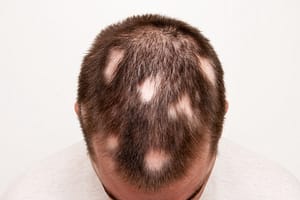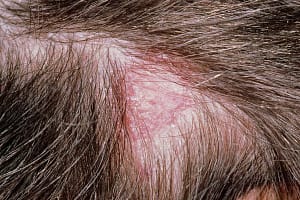Children's Conditions
Hair loss conditions in children are a much more common problem than most people can imagine, causing the child great distress during a time in their life when they want to fit in and be normal, not known as the one with no hair. We specialise in treating hairloss in children, particularly the following conditions:

Alopecia Areata
Condition
This is the sudden appearance of round patches of hair loss on the scalp, these patches are normally very smooth with no hairs within them. Alopecia areata is the bodies immune system attacking the hair follicles, with 1 in every 1,000 children suffering from this condition it is important to get a correct diagnosis.
Treatment
There is no cure for alopecia areata, however there are several medications and treatments that can be used and have given some success. Eva Proudman AIT will accurately diagnose the condition and will explain the causes and treatment options to you; her primary concern is to ensure the best outcome possible.

Tinea Capitis
Condition
This is ringworm caused by a fungal infection to the scalp – not an actual worm! Children with tinea capitis usually have some patchy hair loss with broken hairs visible. Confirmation of this condition may be done using a Woods Light.
Treatment
Treatment also with an antifungal such as Grisofulvin, which is taken orally for 8 weeks, combined with a medicated shampoo such a Nizoral to wash the scalp 2 – 3 times per week. With tinea capitis it is vital that a proper diagnosis is confirmed and the full course of prescribed treatment is taken otherwise the condition will return.
Trauma
Traumatic damage in children is usually due to tight pony tails or braids being worn continually. The use of certain hair bands can also damage the hair. Traumatic damage cannot be reversed, we can however work with a selected range of products to treat and manage the hair whilst the damage is grown and then cut out.
Trichotillomania
This is the continual pulling of the hair, thought to be a compulsive disorder. Often the hair loss is patchy and can be confused with other conditions. It is important to seek advice and correct diagnosis as this condition can result in permanent hair loss.
Telogen Effluvium
In children telogen effluvium can be caused by a variety of things, such as very high fevers, operations, emotional stress, or bereavement.
Hair loss through cancer treatment
For anyone going through chemotherapy or radiotherapy treatments for cancer, the trauma of losing their hair is often much greater than the disease or treatment. We understand how devastating it is for a child or young adult to face losing their hair and we are here to give comprehensive advice and temporary hair loss solutions specifically designed for children. It is important to reassure the child that the hair loss is temporary and that it will regrow, whilst giving them options for coping throughout their treatment period.
